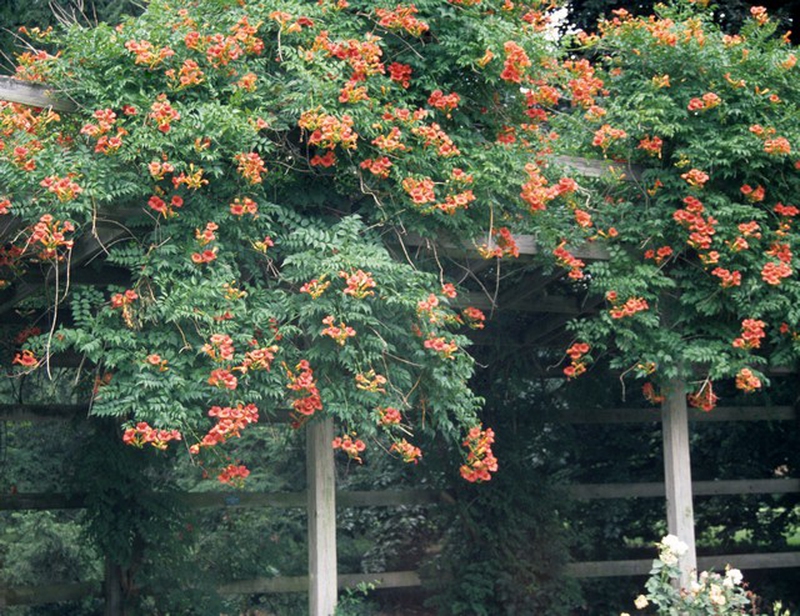Trumpet vines (Campsis radicans) and their magnificent, fiery blooms are captivating, but planting these robust vines near a building can have repercussions for the structure and the vines. Growing in U.S. Department of Agriculture plant hardiness zones 4 through 10, trumpet vines need the right sun and soil for showy blooms, and nearby buildings affect these. Before you plant, consider the future health of the vines and the building.

Part 1
Sunlight Requirements
Trumpet vines earn their keep with an extended show of trumpet-shaped, tubular blooms. Seemingly made for hummingbirds, the nectar-heavy flowers grow up to 3 1/2 inches long and nearly 2 inches wide. Clustered together in groups of four to 12, the blooms cover vine tips in brilliant color -- when the vines receive abundant direct sun. Nearby buildings can interfere with the minimum six to eight hours of full, direct sun trumpet vines need each day. If a building shades the plants significantly, expect poor growth and few blooms. You'll also miss out on the vines' ornamental, 6-inch seed capsules.
Soil Considerations
Trumpet vines handle wet to dry soil, even drought, and soil types from clay to sand. Soil with a pH between 3.7 and 6.8 suits them best. Higher pH levels short the vines of nutrients. Many alkaline construction materials, including concrete foundations and walkways, raise soil pH as they age. Planting close to these building materials can affect trumpet vine health. Lawn fertilizers also impact trumpet vines in undesirable ways. High-nitrogen grass fertilizers stimulate green, leafy growth at the expense of blooms.
Structural Concerns
Trumpet vines quickly grow to 35 feet or more and often need extra support. Sturdy pergolas or arbors may serve as stepping stones to buildings nearby. The vines climb by twining stems and by abundant rootlike stems. Tiny aerial rootlets along these stems attach to rough surfaces and wiggle their way into tiny crevices. They damage wood, stone, stucco and brick. Without added support, the weight of trumpet vines often pulls these materials down, bringing drain spouts and gutters with them. The tiny roots stay attached to the wall or tear away, leaving stained and damaged surfaces behind them.
Root Reprisals
For all its beauty, trumpet vine can be ruthless. Unchecked, the invasive vines overcome neighboring plants along with buildings. Spreading rapidly below ground and above, root suckers spring up everywhere they can. Mowing and hand-pulling keep suckers down, but shoots may multiply in response. Eradicating roots for a redesign can be difficult -- both underground and aerial remnants. Prune trumpet vines, as needed, at any time of the year to keep them confined. Use sharp bypass pruners and sterilize the blades with a spray household disinfectant before and after you prune. Trumpet vine sap irritates skin, so wear protective clothing, including gloves and eyewear, when you prune.

View All Comments /Add Comment